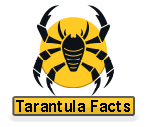Introduction
Table of Contents
Tarantulas are large, hairy spiders that have captivated the curiosity of people for centuries. While many might associate them with fear due to their appearance, these creatures are truly fascinating and play a vital role in our ecosystems. But what exactly does the word tarantula meaning in English? In this article, we’ll dive deep into the tarantula meaning in English and explore its significance, characteristics, habitat, and much more. Whether you’re a student, an educator, or just someone intrigued by the natural world, this article will provide a comprehensive yet easy-to-understand guide on the subject. Let’s unravel the mysteries behind these creatures, shall we?
What Does Tarantula Meaning in English?
The tarantula meaning in English refers to a large, hairy spider belonging to the family Theraphosidae. The name itself has its roots in the town of Taranto in southern Italy, where the European wolf spider (Lycosa tarantula) was first identified. This spider was believed to cause a condition known as “tarantism,” characterized by uncontrollable dancing. Over time, the name “tarantula” was applied to the large spiders of the New World, particularly those found in the Americas.

Etymology of Tarantula
The word “tarantula” is derived from the Italian word “tarantola,” which traces back to the town of Taranto. The belief that a spider bite could lead to wild dancing (tarantism) eventually influenced the naming of these large spiders, even though modern-day tarantulas are generally not dangerous to humans.
Characteristics of Tarantulas
Physical Appearance
Tarantulas are known for their distinctive appearance. They are large and hairy, with bodies that can range in size from 2.5 to 10 cm (1 to 4 inches) in length. Their legs can span up to 30 cm (12 inches), making them one of the largest spiders in the world.
- Body Structure: Tarantulas have two main body segments – the cephalothorax and the abdomen.
- Legs: They possess eight legs, which are covered in hair. These hairs help them sense vibrations in their environment.
- Fangs: Tarantulas have large fangs that they use to inject venom into their prey.
Behavior and Habits
- Nocturnal Creatures: Tarantulas are primarily nocturnal, meaning they are most active during the night.
- Solitary: They are solitary creatures, preferring to live alone rather than in groups.
- Burrowing: Many species of tarantulas create burrows in the ground, where they spend most of their time waiting for prey.
Diet
Tarantulas are carnivorous and feed on a variety of small animals, including insects, small rodents, and even birds. They use their venom to paralyze their prey before consuming it.
Habitat of Tarantulas
Geographic Distribution
Tarantulas are found in a variety of habitats across the world. They are commonly found in warm climates and are particularly prevalent in North America, South America, Africa, and Asia.
- North America: In the United States, tarantulas are mostly found in the southwestern states, such as Arizona, New Mexico, and Texas.
- South America: Countries like Brazil and Venezuela are home to many species of tarantulas.
- Africa: African tarantulas are often found in savannas and grasslands.
- Asia: Some species are found in rainforests and tropical regions.
Preferred Environments
- Deserts: Many tarantulas thrive in arid desert environments, where they burrow into the ground to escape the heat.
- Rainforests: Other species prefer the humid conditions of rainforests, where they can be found living in trees or on the forest floor.
- Grasslands: Tarantulas are also found in grasslands, where they create burrows for shelter.
The Role of Tarantulas in Ecosystems
Tarantulas play a crucial role in maintaining the balance of ecosystems. By feeding on insects and other small animals, they help control the population of pests. Additionally, their burrowing habits contribute to soil aeration, which is beneficial for plant growth.
Predators and Defense Mechanisms
While tarantulas are predators, they are also prey for a variety of animals, including birds, snakes, and other larger spiders. To defend themselves, tarantulas have several mechanisms:
- Hair Flicking: Tarantulas can flick hairs from their abdomen at predators. These hairs can cause irritation and discomfort.
- Venom: Although tarantula venom is not deadly to humans, it can be effective in deterring predators.
Myths and Misconceptions About Tarantulas
Myth 1: Tarantulas are Deadly to Humans
One of the most common misconceptions about tarantulas is that they are deadly to humans. In reality, tarantula bites are rarely dangerous. Their venom is not potent enough to cause significant harm to humans, and most bites result in mild symptoms similar to a bee sting.
Myth 2: Tarantulas Are Aggressive
Another myth is that tarantulas are inherently aggressive creatures. While they may appear intimidating, tarantulas are generally docile and prefer to avoid confrontation. They will only bite if they feel threatened.
Table of Information: Quick Facts About Tarantulas
| Feature | Details |
|---|---|
| Scientific Family | Theraphosidae |
| Average Size | 2.5 to 10 cm (1 to 4 inches) |
| Leg Span | Up to 30 cm (12 inches) |
| Diet | Carnivorous (insects, small animals) |
| Lifespan | 15 to 30 years (depending on species) |
| Habitat | Deserts, rainforests, grasslands |
| Geographic Range | Americas, Africa, Asia |
| Behavior | Nocturnal, solitary, burrowing |
Subspecies of Tarantulas: A Diverse Family
Tarantulas are a diverse group, with over 1,000 species identified worldwide. Some of the most well-known species include:
1. Goliath Birdeater (Theraphosa blondi)
- Description: The Goliath birdeater is the largest tarantula species in the world, with a leg span of up to 30 cm (12 inches).
- Habitat: This species is found in the rainforests of South America.
- Diet: Despite its name, the Goliath birdeater primarily feeds on insects and small animals rather than birds.
2. Mexican Redknee Tarantula (Brachypelma smithi)
- Description: Known for its striking red and black coloration, the Mexican redknee tarantula is popular among pet enthusiasts.
- Habitat: This species is native to the deserts of Mexico.
- Diet: It feeds on insects and small rodents.
3. Chilean Rose Tarantula (Grammostola rosea)
- Description: The Chilean rose tarantula has a pinkish hue and is known for its docile temperament.
- Habitat: Found in the grasslands of Chile, this species is also a popular pet.
- Diet: It primarily feeds on insects.
How Tarantulas Are Viewed in Different Cultures
Tarantulas have varying cultural significance across the world. In some cultures, they are revered, while in others, they are feared.
Tarantulas in Native American Culture
In Native American culture, tarantulas are often seen as symbols of patience, persistence, and creativity. They are believed to embody the qualities of a weaver, spinning intricate webs and waiting patiently for their prey.
Tarantulas in Popular Media
Tarantulas have also found their way into popular media, often depicted as fearsome creatures in movies and television shows. However, this portrayal is more fiction than fact, as these spiders are generally harmless to humans.
Conclusion: Tarantula meaning in English
In conclusion, the Tarantula meaning in English goes beyond just being a large, hairy spider. These creatures are fascinating, complex, and play a vital role in the ecosystems they inhabit. While often misunderstood, tarantulas deserve recognition for their contributions to nature and their unique characteristics. Whether you’re a student learning about them for the first time or an adult with a growing interest in arachnids, understanding the true meaning of “tarantula” will hopefully replace fear with appreciation. Next time you encounter a tarantula, remember that they are not just creatures to be feared, but important members of our world.
FAQs About Tarantula Meaning in English
1. Are tarantulas dangerous to humans?
No, tarantulas are generally not dangerous to humans. Their bites are usually mild, with symptoms similar to a bee sting.
2. What do tarantulas eat?
Tarantulas are carnivorous and primarily feed on insects, but they can also eat small animals like rodents and birds.
3. How long do tarantulas live?
Tarantulas can live anywhere from 15 to 30 years, depending on the species and gender, with females generally living longer than males.
4. Where are tarantulas commonly found?
Tarantulas are commonly found in warm climates, such as the Americas, Africa, and Asia, particularly in deserts, rainforests, and grasslands.
5. Do tarantulas make good pets?
Yes, certain species of tarantulas, like the Chilean Rose and Mexican Redknee, are popular pets due to their docile nature and low maintenance need

